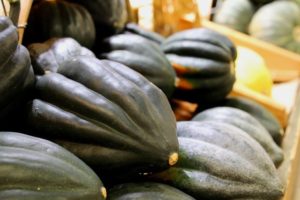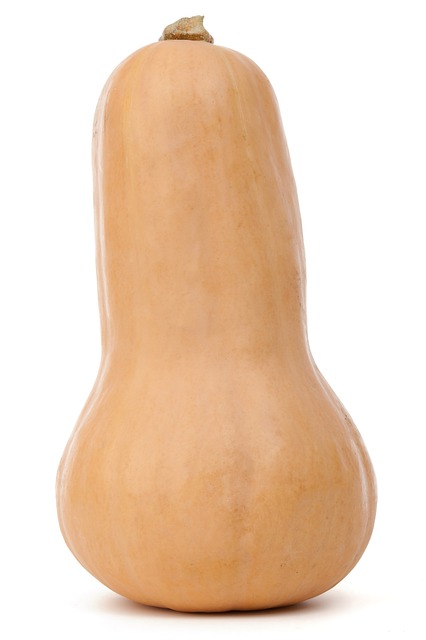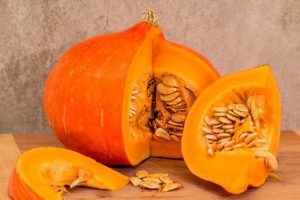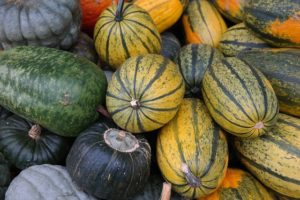
Oh, the beauty of fall and pumpkin spice everything! But did you know that pumpkin is technically a type of winter squash? Winter squash is a blanket term for a variety of squash typically in season from September through February in Colorado, but these are usually available all year round.
The most popular winter squash available in the grocery store include:
- Acorn squash
- Butternut squash
- Spaghetti squash
Selection of Winter Squash
Although the different types of winter squash don’t look very similar, here are some general guidelines you can follow when shopping:
- Should seem heavy for its size
- Check the stem, should be firm and dry
- Thick, hard skin
- The color should be rich and deep
- The skin should look dull not shiny
- No cracks or soft spots
- When choosing butternut squash, choose one with a long neck and small bulb
Preparation of Winter Squash
 The most challenging parts of cooking winter squash is cutting it open (after you wash it with some cool water). Its tough rind keeps it fresh for up to three-six months when stored in cellar-like conditions (around 50 degrees), but it can make you break a sweat in the kitchen. An easy way to combat this is to put a damp towel under your cutting board to keep it from sliding around and cutting off the ends to create a flat surface. You could also poke holes into it and put it in the microwave for about five minutes to soften it. Once it is cut, it will last about a week in the refrigerator.
The most challenging parts of cooking winter squash is cutting it open (after you wash it with some cool water). Its tough rind keeps it fresh for up to three-six months when stored in cellar-like conditions (around 50 degrees), but it can make you break a sweat in the kitchen. An easy way to combat this is to put a damp towel under your cutting board to keep it from sliding around and cutting off the ends to create a flat surface. You could also poke holes into it and put it in the microwave for about five minutes to soften it. Once it is cut, it will last about a week in the refrigerator.
When you do get it open, it’s time to scoop out all of the seeds like you would a jack-o-lantern, but don’t throw them away quite yet, because you can roast them into a yummy snack for later.
Now, it’s time for cooking the squash or roasting, baking, steaming, boiling, microwaving, grilling, sautéing, etc. The options are just about endless. Although it will vary depending on the squash and recipe used, you’ll know the squash is done when you can easily pierce the insides with a fork.
Health Benefits of Winter Squash
Winter squash are typically inexpensive and are an easy way to make a nutritious meal! Butternut and acorn squash are high in vitamin A, vitamin C, and potassium. They also include the seeds you can roast that are filled with potassium, magnesium, and fiber. While spaghetti squash may not hold quite as much of these nutrients, it’s a great low carbohydrate and calorie option that’s quite fun to cook with!
For more Information and Recipes Visit
- https://www.cultivatemichigan.org/sites/default/files/documents/Squash_Guide_final.pdf
- http://foodhero.org/recipes/categories/133
- https://snaped.fns.usda.gov/seasonal-produce-guide/winter-squash
Thanks to Julie Klausing, former Dietetic Intern from Tri-County Health, for contributing this article.

